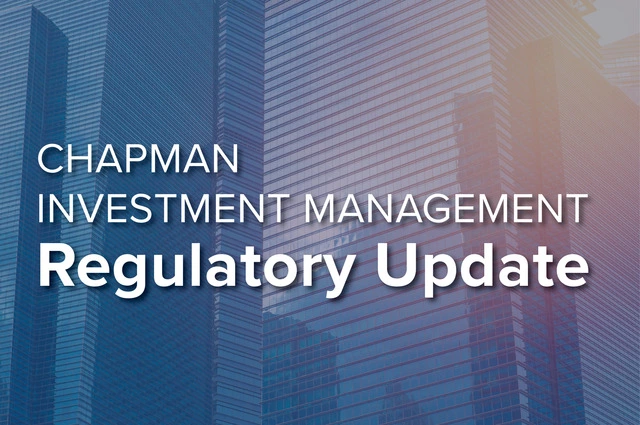- Topic: Renewable Energy
21 matches.
On May 16, 2024, the IRS released Notice 2024-41 (the “Notice”), which provides updated guidance on the domestic content bonus energy credit available for qualifying energy projects under the Inflation Reduction Act of 2022 (the "IRA"). The Notice modifies existing guidance on the domestic content bonus under Notice 2023-38 (“Notice 2023-38”) and establishes a new elective safe harbor (the “New Elective Safe Harbor”) that allows project owners to determine certain projects’ eligibility for the domestic content bonus using predetermined cost percentages provided by the IRS.
On November 17, 2023, the IRS released proposed regulations (the “Proposed Regulations”) that provide guidance relating to the investment tax credit (the “ITC”) under Section 48, which provides a tax credit for investment in certain types of green energy technology.
One of the most innovative features of the energy tax credit provisions of the Inflation Reduction Act (the “IRA”), which became law on August 16, 2022, is a pair of provisions that allow taxpayers to sell energy tax credits to a third party for cash (Section 6418) or to elect to receive a cash payment of the tax credit directly from the federal government (Section 6417).1 Since the IRA was enacted, taxpayers, tax-exempt organizations, governmental entities, and their advisors have been counting the days for the IRS to provide guidance on how to apply these monetization provisions, which are expected to be a game-changer in the U.S. market for investment into green energy technologies.
The IRS released a major package of temporary and proposed regulations on these provisions on June 14, 2023.
On February 13, 2023, the IRS released Notices 2023-17 and 2023-18, which provide guidance on energy incentive tax credit provisions that were amended by the Inflation Reduction Act of 2022 (the "IRA"). Taxpayers and their advisors have been eagerly awaiting guidance on many aspects of the IRA's changes. The guidance in Notices 2023-17 and 2023-18, however, does not cover many of the most pressing issues regarding the new tax credit rules, such as the details of how to obtain a refund of tax credits under the new “direct pay” provision and how to comply with the prevailing wage and apprenticeship requirements. The IRS has stated that it will issue additional guidance on the IRA's changes to existing tax credit provisions in the future.
The Inflation Reduction Act (the “IRA”), which became law in August 2022, provides one of the most significant packages of renewable energy incentives in recent history. Most of the renewable energy provisions take the form of extended and expanded tax credits, which apply to investments in solar, wind, geothermal and other nontraditional energy resources. One tax credit provision of the IRA that will be of interest to ordinary consumers are the changes to the tax credit for taxpayers who purchase an electric vehicle (the “EV tax credit”).
The Inflation Reduction Act (the "IRA") is being hailed as one of the most significant legislative actions in recent history intended to incentivize investment in renewable energy technologies. The IRA generally achieves this through the extension and broadening of existing tax credit provisions that apply to investments in clean energy technologies such as solar, wind and geothermal. Since the IRA became law in August 2022, taxpayers have been eagerly awaiting regulations and other guidance on how to apply the new provisions and how to claim the tax credits. On November 30, 2022, the IRS issued the first item of guidance on these provisions in the form of IRS Notice 2022-61 (the "Notice").
The Inflation Reduction Act (the “IRA”), which became law on August 16, 2022, includes only a handful of tax provisions. Though few in number, the new provisions are expected to have a major impact on taxpayers. The corporate minimum income tax and excise tax on stock buybacks are both entirely new tax regimes implemented under the IRA. In addition, the IRA has introduced major changes to the investment tax credit (the “ITC”) and the production tax credit (“PTC”), which are intended to encourage investment in renewable energy projects, such as solar and wind projects.
Environmental, Social and Governance (“ESG”) investing continued to grow throughout 2021 and this growth is expected to continue into 2022 as ESG investments are estimated to surpass $41 trillion in assets under management globally by the end of the year. ESG investing occurs when investors make investment decisions based on a company’s environmental, social and governance policies and performance alongside traditional financial metrics. As investment firms, lending institutions, and individual investors are increasingly looking at ESG factors to identify material risks and growth opportunities, a number of trends are expected to emerge in the upcoming year. These include regulation of ESG disclosures, growth in green technology, renewable energy and infrastructure investments, and heightened standards associated with sustainable finance.
At today’s Earth Day Climate Summit, President Joe Biden announced to world leaders that the United States is committed to cutting its greenhouse gas emissions by 50% to 52% from 2005 levels by 2030.
Environmental, Social and Governance investing in the United States has reportedly reached an estimated $250 billion in assets under management and is expected to see continued growth in 2021 and beyond.
Earlier this month, Governor Jerry Brown of California signed into law a bill that sets some of the strongest clean energy standards in the world. Senate Bill 100 requires that one hundred percent of all retail sales of electricity in California come from clean energy sources by 2045.
- Pratt's Energy Law Report
On February 9, President Trump signed into law the Bipartisan Budget Act of 2018 which retroactively extended some temporary tax breaks and includes some additional provisions which were left out of the Tax Cuts and Jobs Act of 2017.
On December 7, 2016, Public Act 99-0906 was enacted into law, with an effective date of June 1, 2017. The Act calls for updates to Illinois’ Renewable Portfolio Standard, net metering, and energy efficiency standards, as well as a new zero emissions credits plan.
- May 2017Pratt's Energy Law Report / LexisNexis Emerging Issues Analysis
The Future Energy Jobs Bill was enacted into law on December 7, 2016, as Public Act 99-0906, with an effective date of June 1, 2017. The Act calls for updates to Illinois’ renewable portfolio standards, net metering, and energy efficiency standards, as well as a new zero emissions credits plan.
On February 14, two federal lawsuits were filed in Illinois challenging the legality of the Zero Emissions Credits program provided for under Illinois’ recently passed Future Energy Jobs Act (Public Act 99-0906).
- Client Alert
In December 2015, Congress passed the Protecting Americans from Tax Hikes Act of 2015, which extended certain federal renewable energy tax credits for projects that began construction prior to the dates set forth in the Path Act. In response to that extension, the IRS has issued additional guidance with respect to a renewable energy facility’s eligibility to receive these tax credits.
- Client Alert
Under the American Taxpayer Relief Act of 2012, qualified renewable energy generation facilities that began construction prior to January 1, 2014 are eligible to receive the renewable electricity production tax credit under section 45 of the Internal Revenue Code or, in lieu thereof, the energy investment tax credit under section 48 of the Code.
- Chapman Insights
The majority of power generated in the United States historically has been, and continues to be, generated by large-scale, centrally located generation facilities.
- Client Alert
Pursuant to the American Taxpayer Relief Act of 2012, qualified facilities that begin construction before January 1, 2014 will be eligible to receive the renewable electricity production tax credit under section 45 of the Internal Revenue Code or, in lieu thereof, the energy investment tax credit under section 48 of the Code.
- Client Alert
The Internal Revenue Service recently released Notice 2012-44, which provides guidance concerning qualified energy conservation bonds. QECBs are taxable bonds that can be issued by state or local governments to finance certain energy conservation projects, including: (i) reducing energy consumption in publicly owned buildings by at least 20 percent; or (ii) implementing green community programs. QECBs may also be issued to finance certain electricity-producing facilities, such as wind facilities and solar facilities.
- Client Alert
The Internal Revenue Service recently released Notice 2012-44, which provides guidance concerning qualified energy conservation bonds. QECBs are taxable bonds that can be issued by State or local governments to finance certain energy conservation projects, including: (i) reducing energy consumption in publicly-owned buildings by at least 20 percent; and (ii) implementing green community programs. QECBs may also be issued to finance certain electricity-producing facilities, such as wind facilities and solar facilities.









